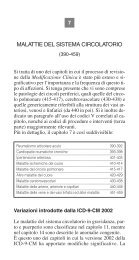scheda9 subordinate fuori posto
scheda9 subordinate fuori posto
scheda9 subordinate fuori posto
You also want an ePaper? Increase the reach of your titles
YUMPU automatically turns print PDFs into web optimized ePapers that Google loves.
STRUTTURA DELLA FRASE: IL PUNTO GIUSTO AL MOMENTO GIUSTO<br />
www.pensiero.it<br />
Subordinate <strong>fuori</strong> <strong>posto</strong><br />
Per migliorare frasi troppo lunghe e complicate, è fondamentale risistemare le<br />
preposizioni più significative nei “luoghi geografici” della frase di maggior enfasi e<br />
seguire i criteri vecchio-nuovo, generale-specifico, breve-lungo e così via, riportati<br />
nella scheda 8, “L’ordine delle proposizioni”. Tuttavia, una tale riorganizzazione logica<br />
del periodo non è sempre applicabile…<br />
Prendiamo, ad esempio, una frase breve come:<br />
While eating at the lunch cafeteria, the computer malfunctioned.<br />
È una frase concisa che esprime un’azione e dove i soggetti sono immediati o lo sono<br />
almeno in apparenza. Ma tradotta in italiano diventa: “Mentre il computer era alla<br />
mensa, ha smesso di funzionare”, che ovviamente non ha senso. Analizzando bene la<br />
frase originale si osserva che l’Autore è incappato in una subordinata “<strong>fuori</strong> <strong>posto</strong>” (in<br />
inglese, dangling modifier), cioè in una subordinata il cui soggetto implicito non<br />
corrisponde a quello esplicito della proposizione principale.<br />
Per mettere a <strong>posto</strong> la subordinata <strong>fuori</strong> <strong>posto</strong>, l’Autore può scegliere una delle<br />
seguenti soluzioni:<br />
esplicitare il soggetto sottinteso nella subordinata<br />
trasformare la subordinata nella propria indipendente<br />
spostare la subordinata più vicina all’elemento che dovrebbe modificare<br />
sostituire il soggetto della principale con un altro che sia in accordo con la<br />
subordinata.<br />
Con queste regole a mente, l’Autore può correggere la frase iniziale esplicitando il<br />
soggetto sottointeso della subordinata:<br />
While I was eating in the cafeteria, the computer malfunctioned.<br />
MANUELLA WALKER – SCRIVERE L’INGLESE MEDICO<br />
scheda n. 9
Nel caso invece di una subordinata <strong>fuori</strong> <strong>posto</strong> come questa:<br />
Flying around the room, I saw two birds.<br />
www.pensiero.it<br />
l’Autore può decidere di invertire le proposizioni, collocando la subordinata più vicina<br />
al termine a cui si riferisce. La frase così corretta diventa:<br />
I saw two birds flying around the room.<br />
In questo caso:<br />
Considering the lack of original data, the paper was refused.<br />
può invece correggere il soggetto della principale e poi trasformare il verbo reggente<br />
dalla forma passiva in quella attiva.<br />
Considering the lack of original data, the reviewer refused the paper.<br />
Un po’ di pratica…<br />
When illustrated with these adverse effects, not one objection was made.<br />
When we were illustrated with these adverse effects, not one of us made<br />
objections.<br />
Not one person objected when illustrated with these adverse effects.<br />
To understand this answer, the question has to be analysed.<br />
We must analyse the question if we want to understand the answer.<br />
To understand the answer we must analyse the question.<br />
Being a vehicle of infection, we made arrangements for quarantine.<br />
Because the animal was a vehicle of infection, we made arrangements for<br />
quarantine.<br />
Being a vehicle of infection, the animal was set in quarantine.<br />
MANUELLA WALKER – SCRIVERE L’INGLESE MEDICO<br />
scheda n. 9












